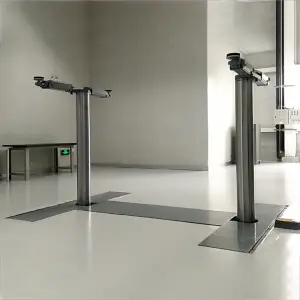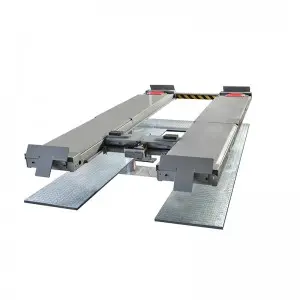In the world of automotive repair, maintenance, and customization, having the right tools and equipment can significantly impact efficiency, safety, and quality of work. One of the most advantageous tools that garages and workshops can invest in is an inground lift. Designed for both professional mechanics and car enthusiasts, inground lifts provide a seamless way to elevate vehicles for inspection, maintenance, and repairs. This article delves into the various benefits, types, and considerations of inground lifts, helping you understand why they are essential in today’s automotive industry.
What is an Inground Lift?

Understanding the Benefits of Inground Lifts: A Comprehensive Guide for Automotive Enthusiasts and Workshop Owners
An inground lift is a type of vehicle lift that is installed below the ground level, allowing cars to be raised and suspended without intruding into the workspace. Unlike traditional above-ground lifts, inground lifts are discreet and take up minimal space above the garage floor. They operate similarly to hydraulic lifts, where pressure is applied to raise or lower a vehicle. These lifts are ideal for workshops with limited overhead space or where aesthetic appeal and safety are paramount.
Key Benefits of Inground Lifts
1. **Space Efficiency**: One of the most significant advantages of inground lifts is their space-saving design. Since they are installed below ground, they do not obstruct the ceiling, allowing for maximum headroom. This feature is especially beneficial for smaller garages or workshops where vertical space is at a premium.
2. **Enhanced Safety**: Inground lifts offer a higher level of safety compared to traditional vehicle lifts. The flush design means there are no protruding parts or obstacles that can cause tripping hazards. Additionally, many models come equipped with safety locks and automatic shut-off features that provide additional peace of mind while working underneath a vehicle.
3. **Improved Accessibility**: When using an inground lift, mechanics can easily access the undercarriage of a vehicle without having to kneel or bend over—a task that can lead to discomfort or injuries over time. The lift brings the vehicle to a comfortable working height, ensuring that technicians can perform their tasks efficiently and safely.
4. **Increased Productivity**: With inground lifts, technicians can complete tasks more quickly and effectively. Having the vehicle elevated means that repairs can be performed without constantly repositioning jack stands or dealing with cumbersome ramps. This increased efficiency can lead to higher throughput in busy workshops.
5. **Aesthetic Appeal**: For automotive enthusiasts who build custom garages or workshops, the aesthetics of the space matter. Inground lifts maintain a sleek and clean look, giving the workshop a professional appearance. This design can enhance the overall environment, making it more enjoyable to work in.
Types of Inground Lifts
Inground lifts come in various types and capacities, catering to different needs:
– **Two-Post Inground Lifts**: These are the most common type and typically involve two lifting points. They are perfect for standard cars and lighter vehicles.
– **Four-Post Inground Lifts**: These offer stability and can accommodate larger vehicles or those with heavy loads. They provide a wider lifting area and are often used for vehicle storage along with maintenance.
– **Scissor Inground Lifts**: Known for their compact design, these lifts use a scissor mechanism to elevate vehicles. They are suitable for both home garages and commercial applications.
Considerations When Selecting an Inground Lift
When choosing an inground lift, several factors should be considered:

Understanding the Benefits of Inground Lifts: A Comprehensive Guide for Automotive Enthusiasts and Workshop Owners
1. **Weight Capacity**: Ensure that the lift can accommodate the weight of the vehicles you plan to service. Common weight capacities range from 7,000 to 20,000 pounds.
2. **Installation Requirements**: Inground lifts require substantial installation work, including excavation and concrete work. Be prepared for the installation costs and time involved.
3. **Maintenance Needs**: Like any piece of equipment, inground lifts require regular maintenance to ensure their longevity and safety. Familiarize yourself with the maintenance guidelines before making a purchase.

Understanding the Benefits of Inground Lifts: A Comprehensive Guide for Automotive Enthusiasts and Workshop Owners
Conclusion
Inground lifts represent a significant advancement in automotive service technology, offering numerous benefits to both professionals and enthusiasts alike. By understanding the space efficiency, safety features, improved accessibility, and increased productivity they provide, individuals can make informed decisions when investing in this essential piece of equipment. Whether you are a workshop owner looking to streamline your operations or a car hobbyist aiming to enhance your garage, inground lifts are a worthy consideration that can elevate your automotive experience.quick lift car lift



